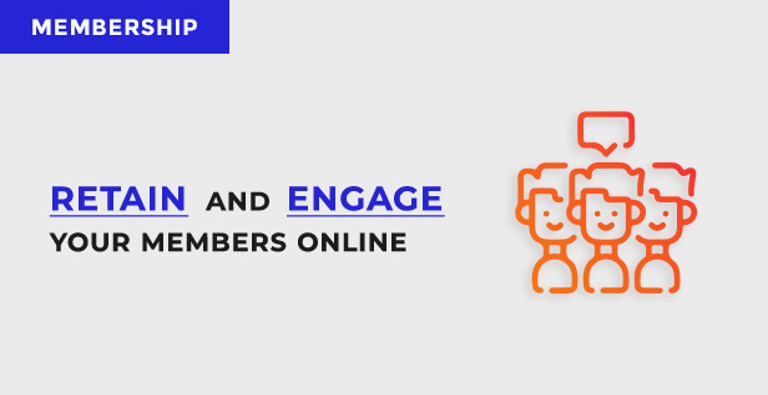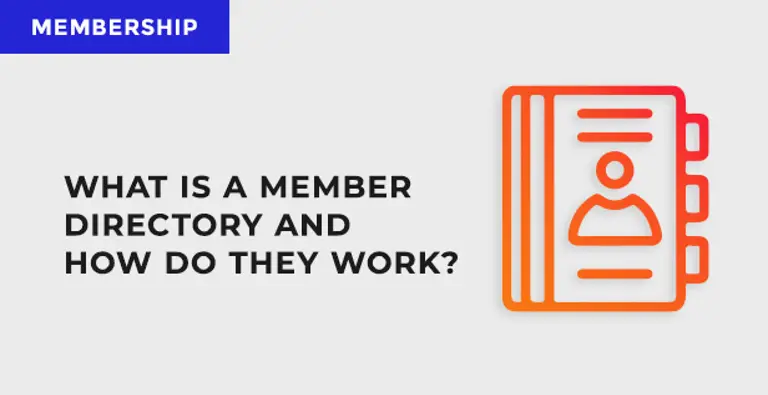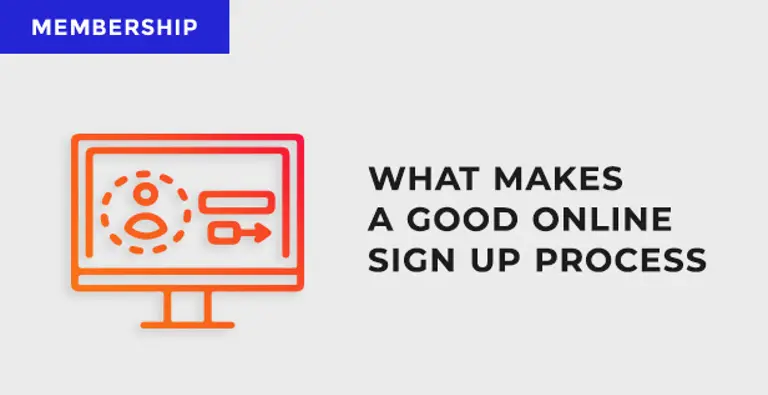If you’re not asking these questions then you’ve little chance of success when trying to engage your members online, you need to be thinking about these two aspects on a regular basis. If you want to learn more read on.
What do your members value?
The key to engagement is listening to your members to see what they want from your organisation, as well as what they expect. It’s important to acknowledge the difference between the two.
To find out what your members value, conducting a survey is always a great start. By doing a survey you can begin to drill down on specifics and the answers you receive could be invaluable.
Some tips on conducting a survey:
- Try to use multiple choice questions instead of open text - this will allow you to analyse the results more accurately and will be easier for your members to complete the survey.
- Keep the numbers of questions relatively low – Your members are more likely to complete the survey if it’s only going to take a couple of minutes. If the survey’s too long there’s a good chance they won’t complete it.
- Make it clear how long the survey is likely to take in advance – By telling your members how long it’s likely to take, you’re giving them confidence that it’s not going to take up too much of their time, increasing the likelihood of them completing it.
- Use a purpose-built reliable survey platform – Use a platform that’s designed to undertake surveys such as SurveyMonkey which allow you to create surveys that are easy on the eye and function brilliantly.
Once you’ve conducted your survey, gather your responses and look for trends, this will create the foundations and the next steps to engaging with your members. All membership organisations have different priorities so the questions will vary, but the main goal is to identify where the value lies for your members; bare this in mind when collating your questions.
Below we’ve covered off some of the popular expectations many members have when joining a membership organisation.
Member only resources, news & events
Your members are looking for value and will expect to consistently receive it. If you want to retain them then you’ll have to keep offering them value, which can come in many different forms.
For example, having a news section for members only is a great way to keep members re-visiting your website to look for updates on the latest topics and stories within your sector.
If the news you’re putting out there is relevant to your sector and of interest to your members, they will keep returning. At which point, you have the opportunity to grab their attention and direct them towards other valuable content such as resources and events.
Most membership organisations will have a vast amount of knowledge and information to offer which when used in the right way can add real value to the membership base.
Using that knowledge, you could develop a training course and advertise this on your website. If it’s a success, you may want to advertise more courses and run them more often.If you want to add extra value, make these courses available for members only. This is going to boost retention and falls under the restricted content umbrella which you can also use to gain new members too.

Photo by Samuel Pereira on Unsplash
Although physical events aren’t happening on a large scale at the moment, you should not neglect the importance of continuing to offer events online instead. Online events and webinars are drumming up a storm at the moment and yes there may be some operational concerns however, there is one distinctive benefit of an online event that’s hard to ignore. Location doesn’t matter.
If you can find a way to host an online event that’s going to be of value to your members you should run it.
Don’t let your members forget about you
Your members need to know you’re still around and ‘things are happening’. Stay in touch with them via email to keep them engaged. Email marketing is a great way to keep them up to date with your latest information.
There are some comprehensive email marketing platforms out there that will allow you to create email campaigns and monitor their success, one of those being MailChimp.
Make sure you don’t overload your members inbox with emails though as this could have the opposite effect. In some instances, once a month is enough, it might be a monthly newsletter where you collate all your updates in to one email, or you could decide to send out smaller bitesize chunks. Each organisation is different and your preferences on engagement will vary.
Remember, even if a member doesn’t read your email, they may still see it… out of sight out of mind comes to mind here.

Sharing content on social media
Social media is a great way to connect with your members, the likelihood of them engaging with you on social media is much higher than most alternative methods of contact because of the way social media is designed.
It encourages people at every opportunity to engage. For example, it encourages people to add comments and will notify relevant people when you’ve posted. In general, it encourages people to get involved. This is perfect for membership organisations who want to engage with members on a more personal level.
Different social media platforms lend themselves better to different types of content…
Facebook is great for posting videos and especially good for creating groups. You could create different topic groups for specific areas of your membership where members with the same interests can connect with each other and with you as an organisation.
Twitter is great for regularly updating your followers with news, for example the digital release of your journal or a report from an event. It’s also ideal for sending out updates such as your plans over the Christmas period. It’s quick and easy for people to share your tweets with their followers too so there’s a good chance for you to gain members through Twitter if used correctly.
Instagram can be used for sharing images and is generally good for keeping your members up to date on an even more personal level. You could share photos of the team on there or pictures of people on their birthdays, this shows your members that there are real people behind the running of the membership organisation they’re part of.
LinkedIn is great for presenting your organisation in a professional capacity and engaging with members on a professional level. It allows you to easily link too and showcase blog articles and web pages that you feel may be of interest to your members. It’s known for it’s great networking features which helps you to connect with other professionals in your sector, and other sectors for that matter. People with personal LinkedIn accounts can also link themselves to your organisation account as employees so members can see your organisation structure.
Directories?
A directory can come in many different forms, whether it be a public facing page that anyone visiting your website can see, or it could be available only to other members of your organisation.
The groups function on Facebook is great for encouraging members to connect, but what if you could take that one step further and offer that through a member directory. This gives you the opportunity to offer members a profile listing on the directory as part of their membership.
Members can create their own directory profile with a description of what their specialism/services are, which is then searchable.
This works great with professional networks, for example, where people are looking to find and speak to specialists in a specific area. We can use comprehensive search tools by location, region, category, keyword so that members can find other members to connect with based on their area of expertise.
The main point here about engagement is that the members who have profiles can message each other directly via the directory which is a very valuable asset to have.
Renewals & Reminders
Before renewals are due, it’s best practice to send multiple reminders to your members so they’re aware that their membership is due for renewal. The emails can be programmed to be sent out automatically which also saves you valuable admin time.
When membership renewals are due it has to be a painless experience for your members if you want them to renew. Automatic renewals by direct debit are recommended as your members won’t have to do anything, they’ll just receive a notification letting them know they’ve renewed.
For members that prefer not to set up a direct debit, online payment options should be next in line. Most card payment providers are easy to integrate with and have simple processes making online payments a must have addition to your website.
By introducing this option you’re offering variety which is expected of most membership organisations in the 21st century. If get your reminders and renewal right your members will be more likely to renew their membership, helping you to increase overall retainment.
Let your members know who you are
It’s important to show visibility of who you are to make members feel part of your community.
Show how your organisation is set up on your website and explain which piece of the puzzle each person is responsible for.
As a member it’s easy to forget that there are real people behind the organisation who are working hard to provide this great online experience for them, so tell them who you are.
By doing this you’re creating a direct connection between you and your members and they feel like they’re engaging with real people, not a robot.
Summary
The critical part of member engagement is understanding what your members want from their membership. Once you understand this, it’s up to you to take the right steps to engage with them.
Don’t try to do everything at once, focus on one area of engagement, get it right then start with the next. As long as you’re planning ahead and providing valuable member benefits you will retain your members for years to come whilst taking new members on board.




